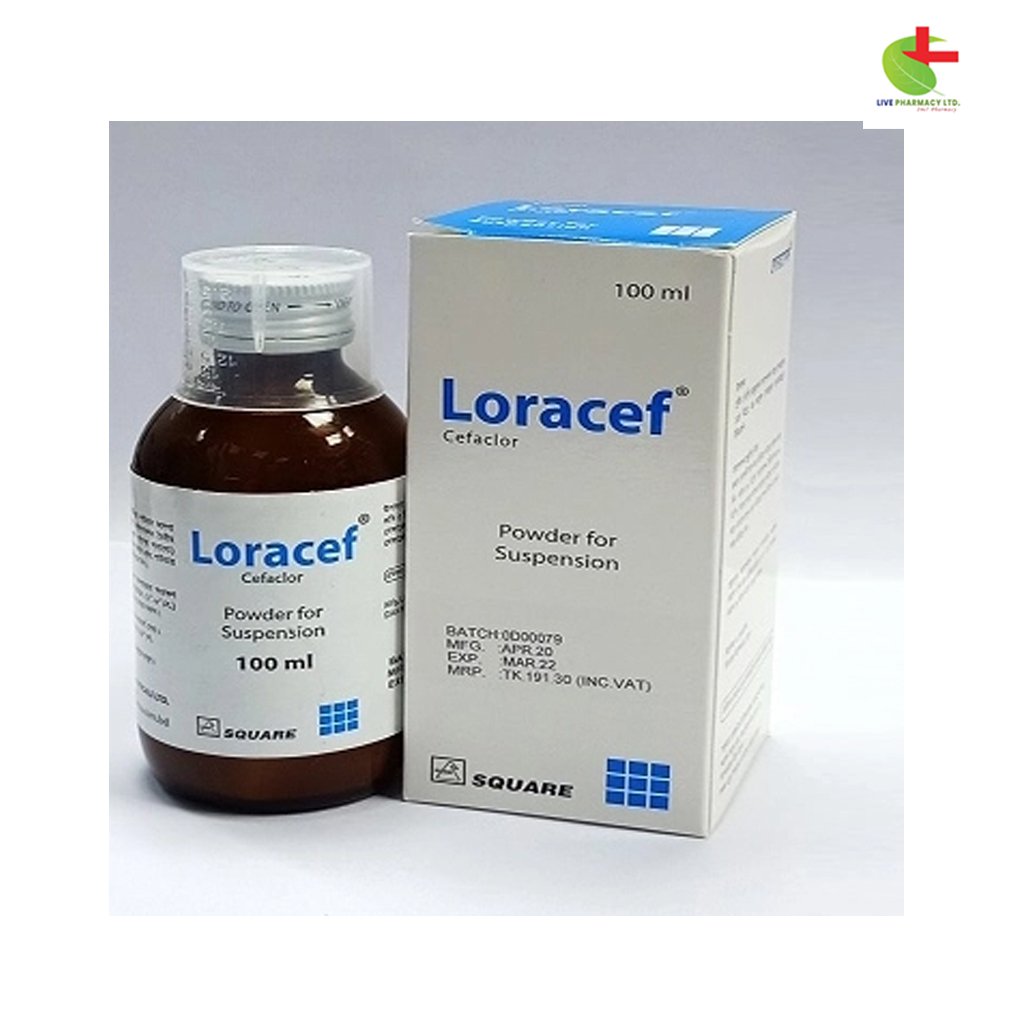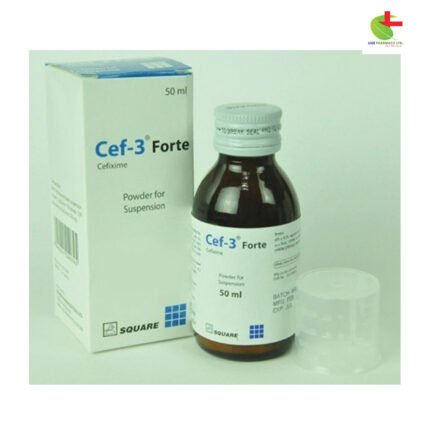Loracef PFS
201.00৳ Pcs
- Loracef is a second-generation cephalosporin antibiotic effective against respiratory tract infections, otitis media, urinary tract infections, and skin infections.
- It targets pathogens such as Streptococcus pneumoniae, Haemophilus influenzae, and Staphylococcus aureus.
- Available formulations include capsules for adults and powder for suspension and pediatric drops for children.
- Dosages are adjusted based on severity of infection, patient age, and renal function.
- Loracef ensures comprehensive treatment options with minimal risk, adhering to safety and efficacy standards.
 Brand
Brand
|
Square Pharmaceuticals PLC |
|---|---|
 Generics
Generics
|
Cefaclor Monohydrate |
 Type
Type
|
Suspension |
 Size
Size
|
100 ML |
Indications:
Loracef is prescribed for treating various infections:
- Respiratory tract infections like pneumonia and bronchitis
- Otitis media and throat infections
- Urinary tract infections including pyelonephritis and cystitis
- Skin and skin structure infections
Pharmacology:
Cefaclor, a second-generation cephalosporin antibiotic, exhibits stability against β-lactamase enzymes and possesses a broad spectrum of activity. It effectively targets organisms such as Streptococci, Staphylococci, Haemophilus influenzae, and Escherichia coli.
Dosage & Administration:
For adults, the usual dose of Loracef is 250 mg every 8 hours, which can be increased for severe infections. Pediatric dosing is weight-based, with adjustments for serious conditions.
Interactions:
Concurrent use with oral anticoagulants may increase anticoagulant effects. Loracef can also lead to false-positive urine glucose tests.
Contraindications:
Patients allergic to cephalosporins should avoid Loracef.
Side Effects:
Capsule: For adults:
- The usual dose is 250 mg every 8 hours.
- For severe infections or those caused by less susceptible organisms, doses may be doubled, with a maximum dosage of 4 g/day.
- Treatment of β-hemolytic Streptococcal infections should be continued for at least 10 days.
Powder for Suspension & Pediatric Drops: For children:
- The usual daily dosage for pediatric patients over 1 month is 20 mg/kg/day in divided doses every 8 hours.
- In serious infections like otitis media and infections caused by less susceptible organisms, 40 mg/kg/day is recommended, with a maximum dosage of 1 g/day.
Dosage for Specific Age Groups:
- <1 year (9 kg):
- Powder for suspension: ½ tsp three times daily
- Pediatric drops: 0.625 ml three times daily
- 1-5 years (9 kg-18 kg):
- Powder for suspension: 1 tsp three times daily
- Pediatric drops: 1.25 ml three times daily
- Over 5 years:
- Powder for suspension: 2 tsp three times daily
Special Populations:
- Renal Impairment:
- Dose adjustments are generally unnecessary for patients with moderate or severe renal impairment.
- Patients Undergoing Hemodialysis:
- A predialysis loading dose of 250 mg-1 g is recommended.
- During the interdialytic period, maintain with 250-500 mg every 6 hours.
- Geriatric Use:
- Clinical experience has not identified differences in responses between elderly and younger patients, although some older individuals may exhibit greater sensitivity.
Pregnancy & Lactation:
Use of Loracef during pregnancy and lactation should be cautiously considered due to limited data on safety.
Precautions & Warnings:
Prescribe Loracef only for proven bacterial infections to avoid promoting resistant bacteria. Caution is advised in patients with gastrointestinal disorders or a history of allergies.
Storage Conditions:
Store Loracef at room temperature, protect from light, and follow specific reconstitution instructions if applicable.













Reviews
There are no reviews yet.